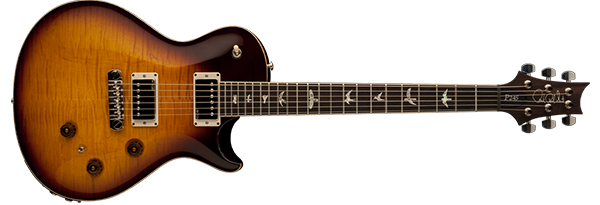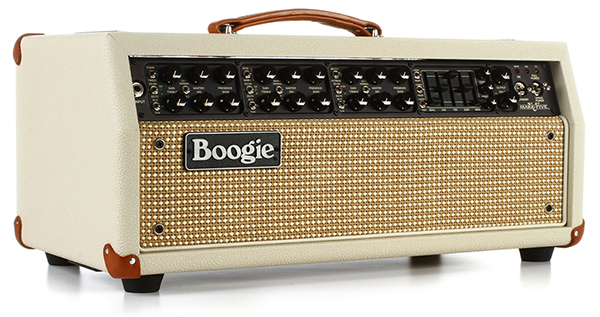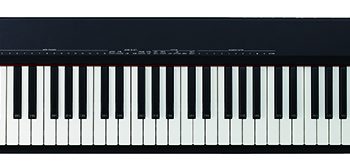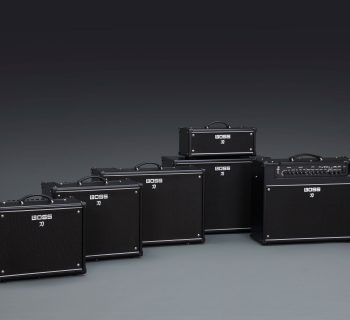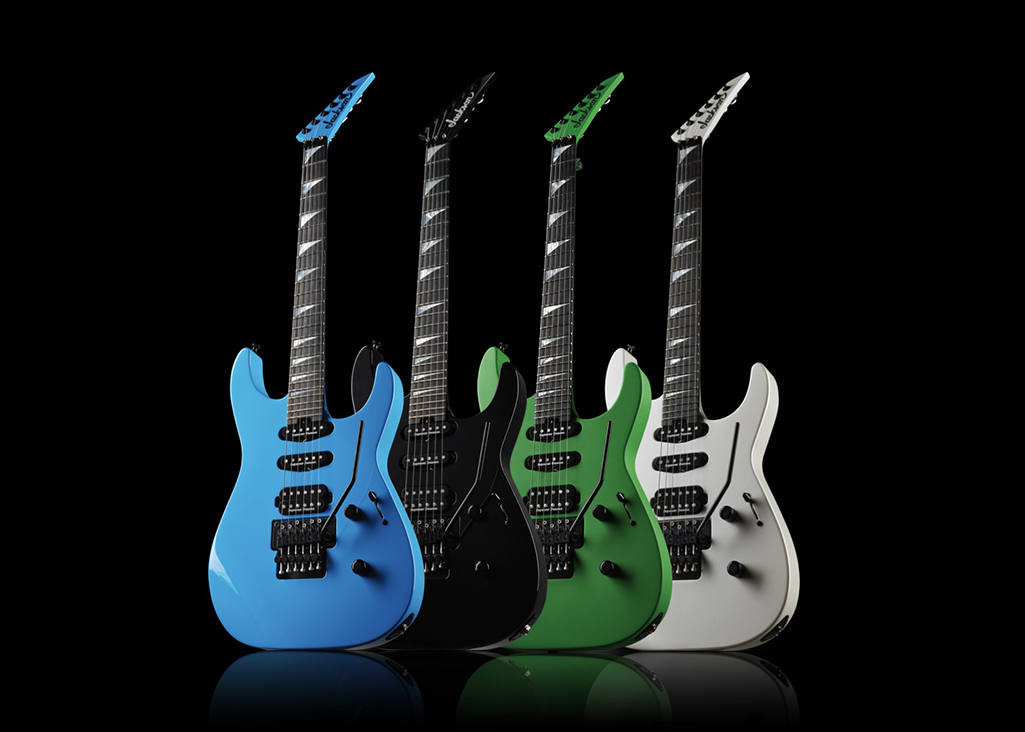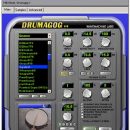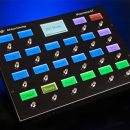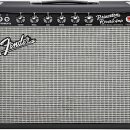 As artists and creators on guitar, we strive to have the best of both worlds—one “everything” guitar that dishes out both fantastic electric guitar tones as well as rich, acoustic goodness. But is that really possible? Almost, yes! One instrument configuration that is a definite favorite of ours is an electric guitar outfitted with under-the-saddle Piezo acoustic pickups, and today, more than a few manufacturers have specific models doing just this. If you’ve never experienced the sublime pleasure of this guitar option with
As artists and creators on guitar, we strive to have the best of both worlds—one “everything” guitar that dishes out both fantastic electric guitar tones as well as rich, acoustic goodness. But is that really possible? Almost, yes! One instrument configuration that is a definite favorite of ours is an electric guitar outfitted with under-the-saddle Piezo acoustic pickups, and today, more than a few manufacturers have specific models doing just this. If you’ve never experienced the sublime pleasure of this guitar option with
proper amplification (read our tutorial on the topic here), you truly don’t know what you’re missing.
Our review guitar, the PRS P245, deftly covers a lot of ground in combining a vintage/classic PRS style, feel, and tone, while adding improved hardware and a twist of modern technological enhancements including the addition of a fabulous Piezo system, making it possible to obtain realistic acoustic sounds straight from the electric guitar. We loved the PRS P22 solidbody guitar with Piezo output, and now, PRS has brought this valuable functionality to their range of single-cut guitars. As with all PRS guitars we’ve experienced, craftsmanship is first class, and the tonal options in the P245 are endless.
Features
 The new PRS P245 is based on a few vintage-style specifications while introducing some very modern and advanced technology. Most noticeable is the vintage style, open back tuners, single cut body design, single wrap-around stop tailpiece, and three-way pickup toggle switch mated to a pair of humbuckers. As you dig in a little deeper, it’s quickly realized that there’s a lot more under the hood of this elegantly designed guitar.
The new PRS P245 is based on a few vintage-style specifications while introducing some very modern and advanced technology. Most noticeable is the vintage style, open back tuners, single cut body design, single wrap-around stop tailpiece, and three-way pickup toggle switch mated to a pair of humbuckers. As you dig in a little deeper, it’s quickly realized that there’s a lot more under the hood of this elegantly designed guitar.
At first glance, our P245 displayed a beautifully quilted, carved maple “10 top” with mahogany body and neck topped with a rosewood fingerboard and, of course, the ubiquitous PRS bird inlays. The P245 is a short scale, twenty-two fret guitar measuring 24.5” with an updated, Wide Fat “Pattern” neck shape. This is a Wide Fat PRS neck style based on Paul’s pre-factory design. It measures 1 11/16” width at the nut with a depth of 27/32,” and 2 ¼” width at the body.
All hardware is nickel-plated and the instrument features PRS Phase III locking tuners, a PRS adjustable Piezo stop tailpiece, and covered 58/15 PRS humbucker pickups. PRS also uses the hardest nickel available for their fret wire (to minimize wear over time).
Control features include one volume control knob, one push/pull tone control that engages single-coil pickup configuration, a three-way pickup select toggle switch, and a blend/volume control knob with mini toggle switch for combined or split Piezo operation.
 The L.R. Baggs/PRS Piezo system is no stranger to PRS lineup. We were first introduced to the system in their P22 model guitars (see review here). The Piezo system operates in two distinct modes: Mix/Mag mode incorporates a single output sending the magnetic and Piezo signals to one input. Discreet Output mode uses two separate outputs to separate the magnetic and Piezo signals, enabling you to send each signal to independent amplifiers.
The L.R. Baggs/PRS Piezo system is no stranger to PRS lineup. We were first introduced to the system in their P22 model guitars (see review here). The Piezo system operates in two distinct modes: Mix/Mag mode incorporates a single output sending the magnetic and Piezo signals to one input. Discreet Output mode uses two separate outputs to separate the magnetic and Piezo signals, enabling you to send each signal to independent amplifiers.
A mini-toggle system selector switch selects between magnetic, Piezo, or both combined, whether in Mix/Mag mode or Discreet Output mode. When both pickup systems are engaged in Mix/Mag mode, the blend control rotary knob allows the player to adjust the mix balance or “blend” of the two pickup types. When in Discreet Output mode, the blend control becomes a dedicated volume control for the Piezo system (the magnetic pickups always have their own dedicated volume knob).
A single nine-volt battery powers the Piezo system. The battery compartment is easily accessible through a snap drawer located adjacent to the two output jacks. Additional independent string volume adjustments are also provided within the battery compartment for each Piezo saddle pickup.
Usability
The most desirable and attractive attribute of the PRS P245 would be hard to disseminate, but having the ability to access real acoustic sounds and a blend of both magnetic and Piezo pickups is truly a great asset. Combined with having the ability to split the magnetic and Piezo signals to two different outputs, select each pickup independently or both combined, along with the ability to control blend amounts of each signal, provides endless tonal options and sonic design.
We like having the ability to adjust the volume of each Piezo pickup per string to ensure consistency throughout the strings based on our style of play. The only obstacle when using the Mix/Mag mode (single output) for combined Piezo and magnetic pickup is that you do not have the option to make any tone adjustments to the Piezo signal independently. You’re locked into the settings of the amp that is most likely optimized tone-wise for your electric guitar and its magnetic pickups. However, you do have the option to tailor the tone of the Piezo signal when using Discreet mode (dedicated output signal that can be run through a DI or straight to a PA system).
Along with the Piezo system and 58/15 pickups, the P245 provides the option to split the coils of the humbucker pickups using the push/pull tone control. This provides additional tonal variety when searching for your desired sound.
The PRS P245 has very low friction pots, which enabled excellent use of pinky volume swells (viva la Eighties!). However, we also found these more adverse to accidental adjustments, particularly when accessing the push/pull coil split control and Piezo mini toggle switch.
The PRS Phase III locking tuners provided excellent tuning stability and ease in string change using the familiar PRS locking system.
Sound
For review purposes, we plugged our PRS P245 into a Bogner Ecstasy 20th Anniversary amplifier as well as a Mesa/Boogie Lonestar using the Mix/Mag output jack on the guitar. While in the clean channel of each amp, there was no mistaking the clarity and precise attack produced by the 58/15 magnetic pickups. These pickups were specifically designed by Paul Reed Smith to deliver exceptional clarity and focused mid-range to capture a classic voice. The clarity and definition in attack held true even when activating the push/pull knob to engage single-coil mode (even though you’ll notice an obvious drop in volume).
You can definitely hear the focused mid-range tone of the pickups in all positions. The bridge pickup gave us an almost rockabilly/country tone with an essence of Tele characteristics whereas the neck pickup provided a scooped but very round, warm, bluesy tone. In all pickup configurations and voicing, there was just the right amount of compression providing juicy amounts of note shimmer and sustain.
 While in our clean tone zone, but with the lowest of expectations, we couldn’t wait to explore the Piezo settings supplied by the P245. Without any adjustment to tone on the amp, we switched the mini toggle switch to Piezo-only mode. To our pleasant surprise, the guitar produced a very deep, rich, round, woodsy acoustic tone making us feel as if we were playing a jumbo acoustic model guitar. The sound was big! There was no mistaking the essence of a full acoustic body sound with plenty of air and note definition that you would find in a well-made acoustic guitar. Note that we’re not surprised by the PRS tonal quality itself—it’s just that having been using Piezo-loaded electric guitars for years now, we know how much better they sound when the output is run to acoustic amplification systems or acoustic guitar D.I. boxes and PA systems. We’re getting to that later…
While in our clean tone zone, but with the lowest of expectations, we couldn’t wait to explore the Piezo settings supplied by the P245. Without any adjustment to tone on the amp, we switched the mini toggle switch to Piezo-only mode. To our pleasant surprise, the guitar produced a very deep, rich, round, woodsy acoustic tone making us feel as if we were playing a jumbo acoustic model guitar. The sound was big! There was no mistaking the essence of a full acoustic body sound with plenty of air and note definition that you would find in a well-made acoustic guitar. Note that we’re not surprised by the PRS tonal quality itself—it’s just that having been using Piezo-loaded electric guitars for years now, we know how much better they sound when the output is run to acoustic amplification systems or acoustic guitar D.I. boxes and PA systems. We’re getting to that later…
Switching to Mix mode (combining Piezo and magnetic pickup signals) opens up a whole new world of tone and dynamics. The PRS 58/15 magnetic pickups combined with the L.R. Baggs/PRS Piezo system provided a very broad palette of tones that you could never achieve with magnetic pickups alone. The focused mid-range of the magnetic pickups combined with the deep, round, woodsy tone of the Piezo acoustic sound delivered a much broader range of frequencies than you’d ever hear from a typical electric guitar without Piezos. It’s especially inspiring when playing with effects.
Time to get lean and mean and see just what the P245 can do with some big gain. We captured the whole vintage vibe from the start, so going a little “less mean” to start seemed logical in the progression of tone. We first plugged into the Mesa Lonestar as it provides a more vintage and classic tone. To no surprise, the bridge position 58/15 provided excellent punch and smooth, even sustain. The dynamics of the pickup also cleaned up nicely by rolling off the volume just a hair, giving us that classic, vintage voice we all love.
Switching over to the neck position, the P245 produced a very round, full-bodied, bluesy tone. As with the neck position pickup, rolling off the volume slightly cleaned up the tone giving us a full bloom from each note without any harshness or muddiness. It’s easy to name a few of your reminiscent icons when listening to all the different tones of the P245. The guitar really provides a wide range of useable and desirable tonal options no matter who you aspire to sound like. It’s what those old slippers or your favorite pair of jeans would sound like if they could produce musical sound.
Taking the guitar to a more modern world of molten metal, we plugged the P245 into our Bogner Ecstasy 20th Anniversary amplifier. The P245 can scream both mean and lean. With excellent attack, note articulation, and smooth, long-lasting sustain, the guitar provided excellent chugs, definition for those double stops and three note chords, and great clarity and bit for those singing, single note, blistering leads. The focused midrange of the 58/15 pickups really nails a classic voice that works so well in a variety of settings.
The real sonic joy for us came when we ran the Piezo output into our L.R. Baggs Para Acoustic D.I. and into a PA system. Layering acoustic guitar tones with our classic rock magnetic tones transports us instantly to the realm of Zeppelin, playing (live) the kinds of things that Jimmy Page was only able to achieve through multi-tracking himself in the studio. And running our amp on a clean channel with big, spacey effects from our Eventide pedals, while running clean, acoustic output through the PA system, enabled us to create lush soundscapes of noises and swirls while the layered acoustic guitar maintained beautiful note clarity. These are the dreamy tricks that you can’t achieve when running both outputs into the same guitar amp.
Documentation and Product Support
Our PRS P245 came equipped with the usual case candy including build ID card, descriptions and operating instructions booklet, tools for basic adjustments, an extra string retainer screw, and (of course) a PRS case decal. The Operating Instructions booklet provided excellent documentation explaining how to control the L.R. Baggs Piezo system and push/pull tone controls. Additional information can be found on the PRS website.
Price
The PRS P245 10 Top has a MAP (minimum advertised price) of $4,350.00, while you can get your hands on a P245 with a standard top for only $3,750. Given the excellent craftsmanship in build and design combined with added premium features including quilted maple, carved 10 Top, PRS custom pickups, push/pull coil tap, and custom L.R. Baggs/PRS Piezo system, we find this guitar is priced fairly when compared with other boutique guitars of similar specifications.
Contact Information
Paul Reed Smith Guitars
www.prsguitars.com
Overall Rating - Product Summary
| Category | Value | Rating |
| Features | 20% | |
| Usability | 25% | |
| Sound | 25% | |
| Documentation & Support | 10% | |
| Price | 20% | |
|
|
||
| OVERALL RATING = 3.6 Stars, which earns it a WIHO Award!
3.6 stars or better: Outstanding, WIHO Award
|
||

